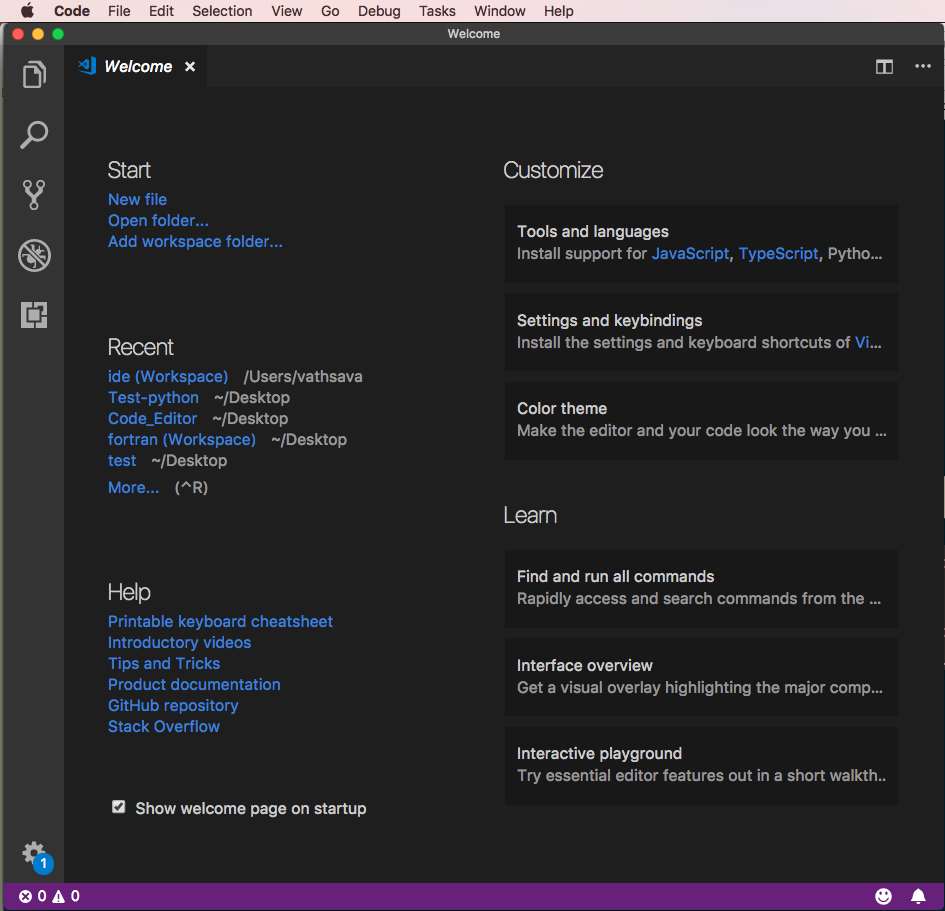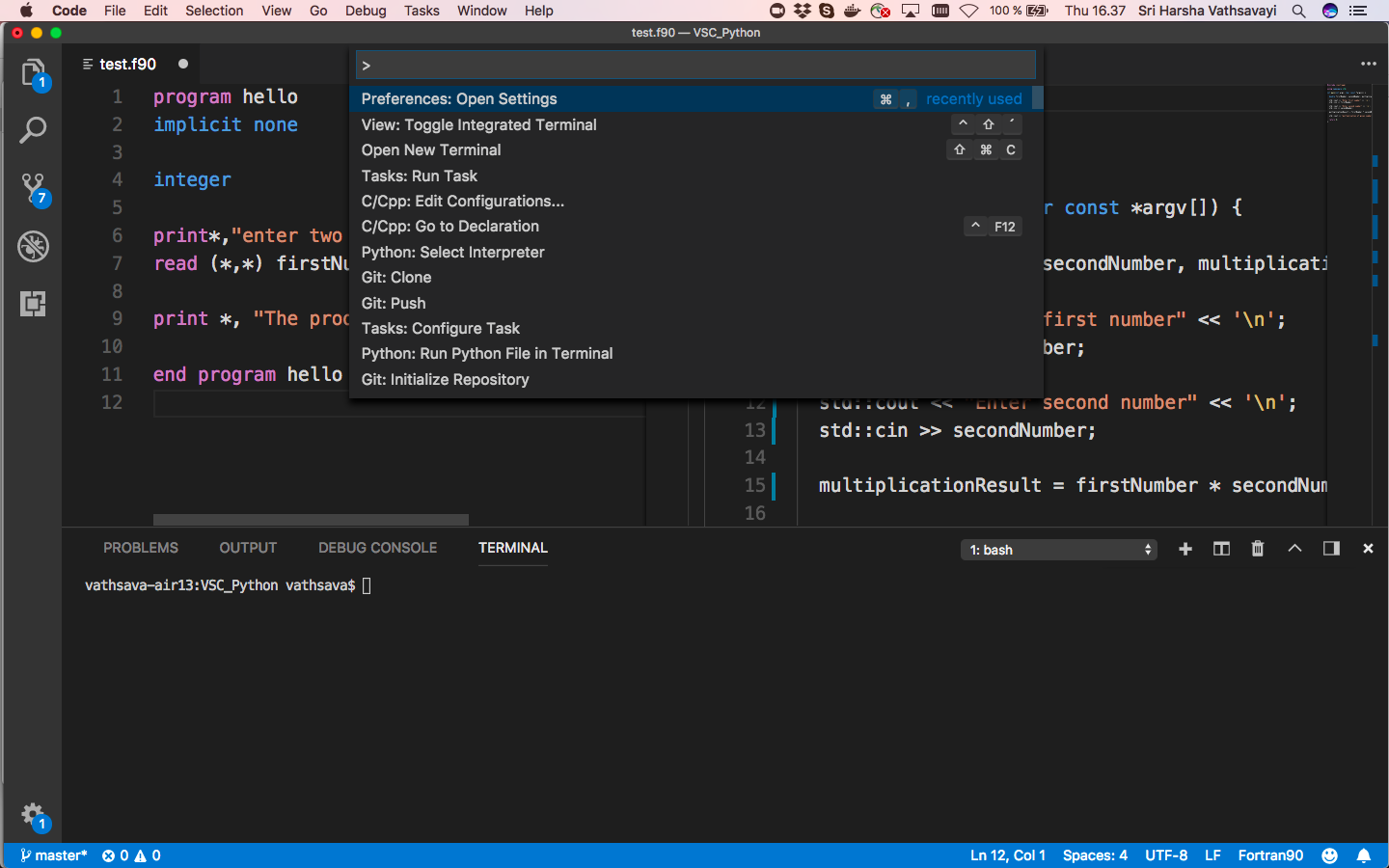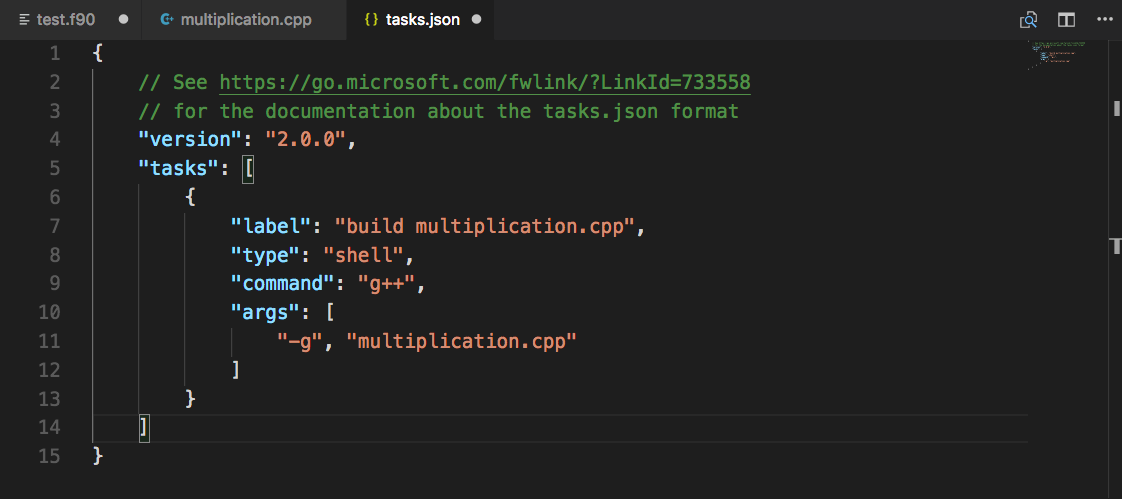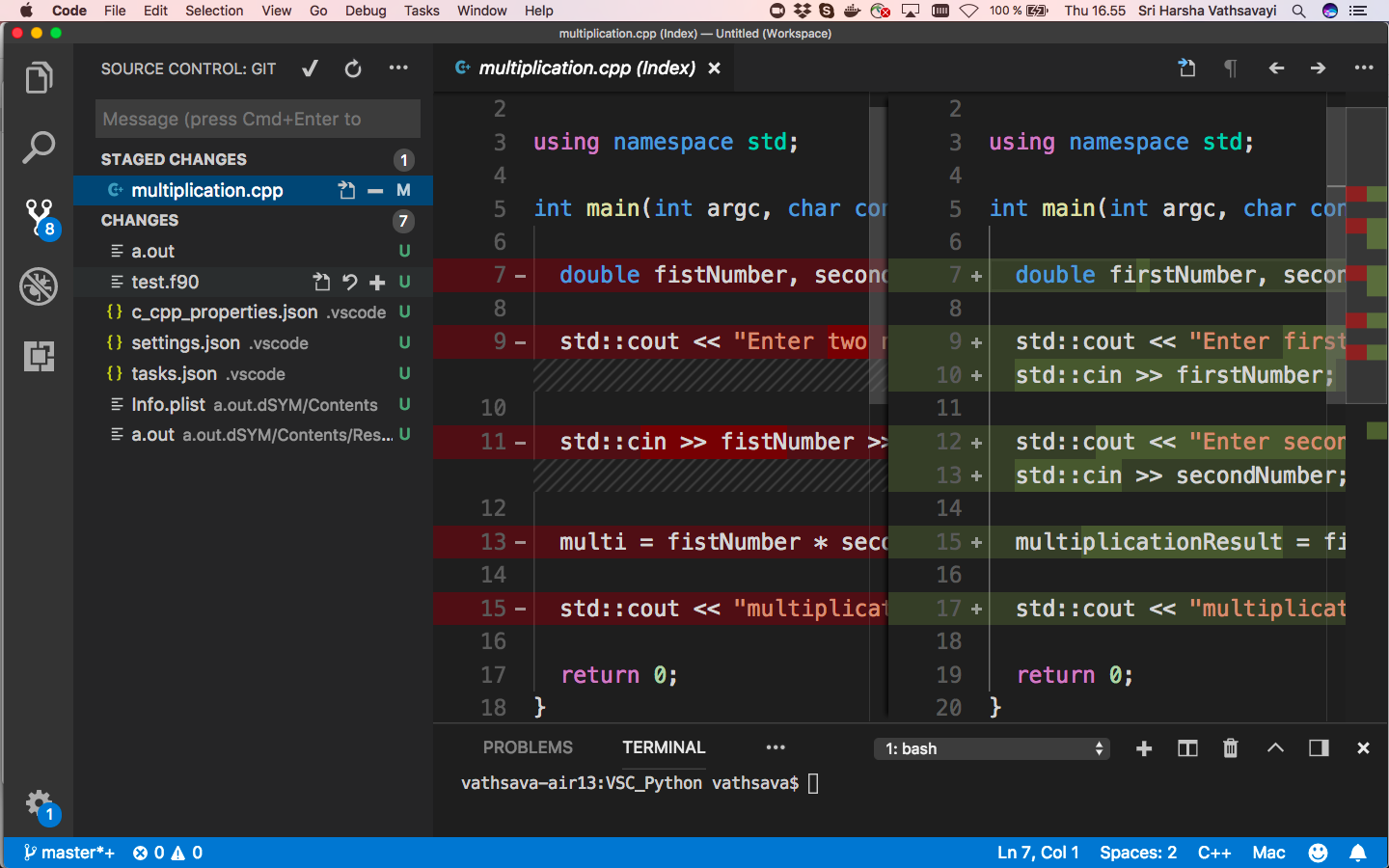
Lesson on automated IDE (PyCharm): Getting to know tools for developing code
Overview
Exercises: 25 min
- What tools are used for developing code
- What is a code editor
- What is an IDE?
- Clarify differences between code editors and IDEs
- Basic concepts of code editors and IDEs are introduced
- Demonstrate how various tools can be used for developing code
Questions
- What tools do you use for developing code?
- How do you compile or execute the code?
- How do you debug the code?
- How do you rename a function or variable across the entire project?
- How do you search for files that uses a function or class?
- Is choosing right tools important?
General workflow in developing code
- Writing the code
- Compiling the code
- Executing the code
- Debugging the code
- Tracking the code with version control
- Searching files, functions, classes, etc
Tools available for developing code
- Terminal-based text editors for writing code (e.g. vi/vim, nano, emacs, etc)
- Command line tools
-
Text-based code editors (e.g. sublime text, Atom, Visual Studio Code)
- Integrated development environments (IDEs) brings you “everything” you need to be a productive programmer to your finger tips
- IDEs are developed to maximize programmer productivity
- IDE is a self-contained package that allow you to write, compile, execute and debug code in the same place
- IDE examples: Netbeans, Eclipse, PyCharm, Ruby Mine, Visual Studio

Terminal-based editors vs code editors vs IDEs
Terminal-based editors
- Terminal editors like Emacs and Vim are quite famous in Linux environments
- Steep learning curve
- Many terminal editors are limited to writing code/text, but you can customize them as needed
- General purpose editors and can be used for writing code in various programming languages
- One need to switch between a terminal editor, command line tools, compilers or interpreters for compiling and executing the code
- One need to switch between multiple tools for developing the code
Code editors
- Code editors are light-weight IDEs
- Mainly developed for writing code
- General purpose editors and can be used for writing code in various programming languages
- Support auto-completion, terminal integration, version control integration, etc
IDEs
- IDE is generally focused on a single language and contains the compiler/interpreter and debugger specific to the language
- (e.g. not easy to use RStudio for developing code in Python and R)
- IDEs are developed to make software development faster and usually offer
- code auto-completion, refactoring support
- fast find of files, function, class
- debug support, integrated build tools, source control management
- One IDE may not be fit for all programming languages
- IDEs do a lot of things on behalf of us
- The pro is that an IDE really integrates features you need. The cons is that you need to learn the in-and-outs of the IDE, especially the keyboard shortcuts, to reap the benefits.
Choosing between Terminal editor - code editor - IDE
| Terminal editor | Code editor | IDE |
|---|---|---|
| Good command line skills are needed for effectively using terminal editors | If you use multiple programming languages then code editors offer good support | If you are working with large code bases, then you should definitely checkout the IDE suitable for your programming language |
| Continue using Emacs and Vim, if you are already proficient | Both IDE and code editors share common features such as code completion, hints, highlighting sections of code | IDEs offer rich support for Debugging and Code refactoring |
| Supports multiple programming languages | Supports multiple programming languages | Focused on a single language |
- Choosing between a terminal editor or code editor or IDE largely depends on the personal preference, the particular programming language and the workflows
Demonstrating terminal editor (no need to type along)
- For demonstrating terminal editor we have selected Vim
- Vim is pre-installed on many operating systems
- Vim can be customized as needed, please check here
We are using a simple program that asks user input (integers) and prints the product of the given input.
def multiplication(first_number, second_number):
return first_number * second_number
first_number = int(input("enter first number :"))
second_number = int(input("enter second number :"))
product_of_numbers = multiplication(first_number, second_number)
print("product of %s and %s is : %s" % (first_number,second_number,product_of_numbers))
- To open a file: vim filename
- To add text: Press i
- To save and exit vim: Hit Escape, then type :wq and hit Enter
- Multiple CLI tools have to be used
Demonstrating code editor
In this lesson we will give overview of a code editor and its functionality. We have selected Visual Studio Code (VS Code) to demonstrate the use of a code editor.
Note: Other code editors also offer similar features and support the functionality that we discuss in this lesson.
We start by opening VS Code.
- Start VS Code
- In the welcome dialog, choose “Open folder”
- Create new folder and give an appropriate name, e.g “Code_editor”

VS Code environment
The UI is divided into multiple areas.
- Editor - The main area to edit your files. You can open multiple editors side by side (up to 3)
- Activity Bar - Located on the far left-hand side, this lets you switch between views and gives you additional context-specific indicators
- Side Bar - Contains different views to assist you while working on your project
- Status Bar - Information about the opened project and the files you edit
- Panels - Displays integrated terminal, output or debug information, errors and warnings, etc

Activity Bar
- Explorer - to explore the current workspace/work folders or add
- Search - to search for files and replace variables
- Version Control - to track the code - e.g. git
- Debug - debugging window
- Extensions - for installing extensions (e.g. programming language specific plugins)
Command palette
- Keyboard can be used to access VS Code features
- Pressing Ctrl + Shift + P (Windows, Linux) brings up the Command Palette. ⇧⌘P (Mac)
- you can access all the functionality of VS Code, including keyboard shortcuts for the most common operations.
- e.g. new file, new folder, git commands

VS Code Settings/Preferences dialog
- Windows and Linux - File -> Preferences -> Settings (⌘,)
- macOS - Code -> Preferences -> Settings (⌘,)
-
You can add your settings to user settings tab to override default settings e.g. add “editor.fontSize” to user settings and adjust it as needed
- Note: As you make modifications, the settings for current folder will be stored under the .vscode folder in your current folder
- You can use the keyboard shortcuts of your old editor (such as Sublime Text, Atom, and Vim) in VS Code. Plese check here for details
Windows users
- You can also attach your git bash to VS Code
- Open settings
- Add “terminal.integrated.shell.windows”: “C:\Program Files\Git\bin\bash.exe” to user settings
- Adjust the path based on your git bash
Using VS Code editor
We can use the code editors for writing code in multiple programming languages, let’s see how:
For demonstrating VS Code we are using a simple program that asks user input (integers) and prints the product of the given input.
For Python users
- Create a file by right clicking in explorer and select “New File”. Call the file
multiplication.py - VS Code shows the appropriate extensions to install
- Alternatively you can “click extensions icon” -> “Search for Python”
- Install the Python extension
- The Python extension automatically detects Python interpreters that are installed in standard locations.
-
You can also use the python.pythonPath in settings to point to an interpreter anywhere on your computer.
- Add the following Python code to the file:
def multiplication(first_number, second_number):
return first_number * second_number
first_number = int(input("enter first number :"))
second_number = int(input("enter second number :"))
product_of_numbers = multiplication(first_number, second_number)
print("product of %s and %s is : %s" % (first_number,second_number,product_of_numbers))
- Run the code by “Right clicking” on editor -> “Run python code in terminal”
Exercise:
- Add a new variable to take third number
- Modify the code to print out the multiplication of three numbers
- As you type in VS Code gives the recommendations
For C++ users
- Create a file by right clicking in explorer and select “New File”. Call the file
multiplication.cpp - VS Code shows the appropriate extensions to install
- Alternatively you can “click extensions icon” -> “Search for C++”
- Install the C/C++ extension
- Add the following C++ code to the file:
#include <iostream>
using namespace std;
int main(int argc, char const *argv[]) {
double firstNumber, secondNumber, productResult;
std::cout << "Enter first number" << '\n';
std::cin >> firstNumber;
std::cout << "Enter second number" << '\n';
std::cin >> secondNumber;
productResult = firstNumber * secondNumber;
std::cout << "product of given input is " << productResult << '\n';
return 0;
}
- To build C++ application from VS Code, you will need to generate a tasks.json file:
- Open the Command Palette
- Select the Tasks: Configure Tasks command
- click Create tasks.json file from templates, and you will see a list of task runner templates
- Select Others to create a task which runs an external command
- Change the the command in tasks.json file to the command line expression you use to build your application (for example g++)
- Add any required args (for example -g to build for debugging)
- You can also change the label to be more descriptive
- Run the code by opening command palette -> run task -> continue without scanning
For debugging, please visit this page

Exercise:
- Add a new variable to take third number
- Modify the code to print out the multiplication of three numbers
- As you type in VS Code gives the recommendations
For FORTRAN users
-
Create a file by right clicking in explorer and select “New File”. Call the file
multiplication.f90 - VS Code shows the appropriate extensions to install
- Alternatively you can “click extensions icon” -> “Search for fortran”
-
Install the Modern Fortran extension
- Add the following fortran code to the file:
program product
implicit none
integer :: i, j
print *, "enter two integers"
read (*,*) i, j
print *, "product of given input is", i * j
end program
- To build fortran application from VS Code, you will need to generate a tasks.json file:
- Open the Command Palette
- Select the Tasks: Configure Tasks command
- click Create tasks.json file from templates, and you will see a list of task runner templates.
- Select Others to create a task which runs an external command.
- Change the command in tasks.json file to the command line expression you use to build your application (for example gfortran).
- You can also change the label to be more descriptive.
- Run the code by opening command palette -> run task -> continue without scanning

Exercise:
- Add a new variable to take third number
- Modify the code to print out the multiplication of three numbers
- As you type in VS code gives the recommendations
Tracking the code
- You can initialize a git repository from the version control tab
- Open folder where you want to initialize git
- Use buttons + to stage and - to unstage
- Changes made to a staged file can be seen from the editor
- Commit changes
- You can also clone a remote repository and work with it (⇧⌘P - type git clone)

- TODO: make some changes and see how changes are shown by VS Code
Searching and replacing
- You can search and replace text from search bar
- As you navigate through change it shows the changes that are going to be done
Exercise:
- search where “firstnumber” variable is used
- replace “firstnumber” with “firstinput”
Debugging with VS Code
Python
- In case of Python, go to debug window and press green button
- Select “Python experimental”
- Debugger will start automatically
Pros and Cons
Terminal editors
- + Pre-installed on many operating systems
-
+ Supports various programming languages
- - steep learning curve
- - one needs to master keyboard shortcuts and CLI tools for using effectively
Code Editor
Code editors are light weight and general purpose
- + Easy to use
-
+ Supports various programming languages
- ±multi functional
- ±can be used for variety of tasks
Key points
Choose a tool that is suitable for your workflow